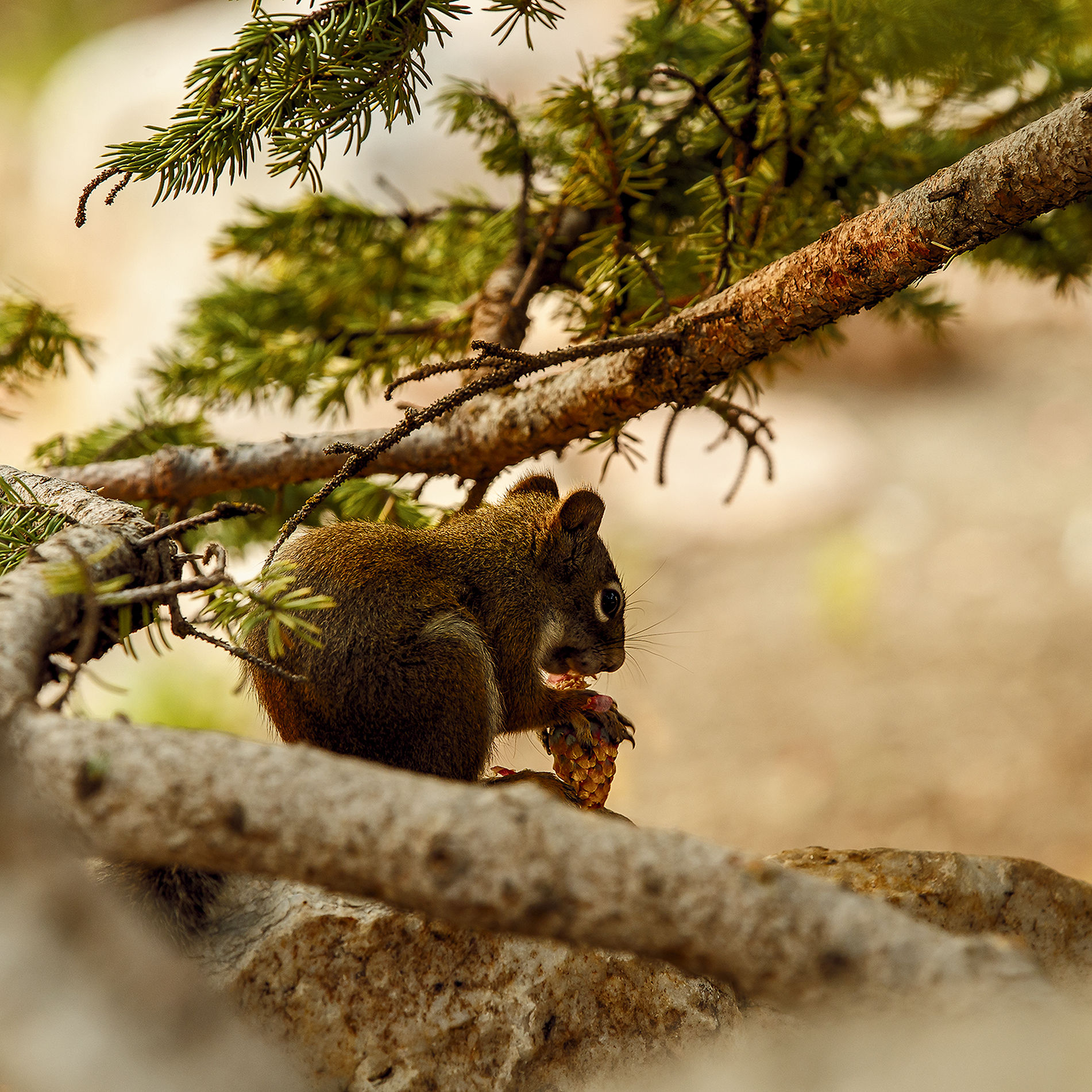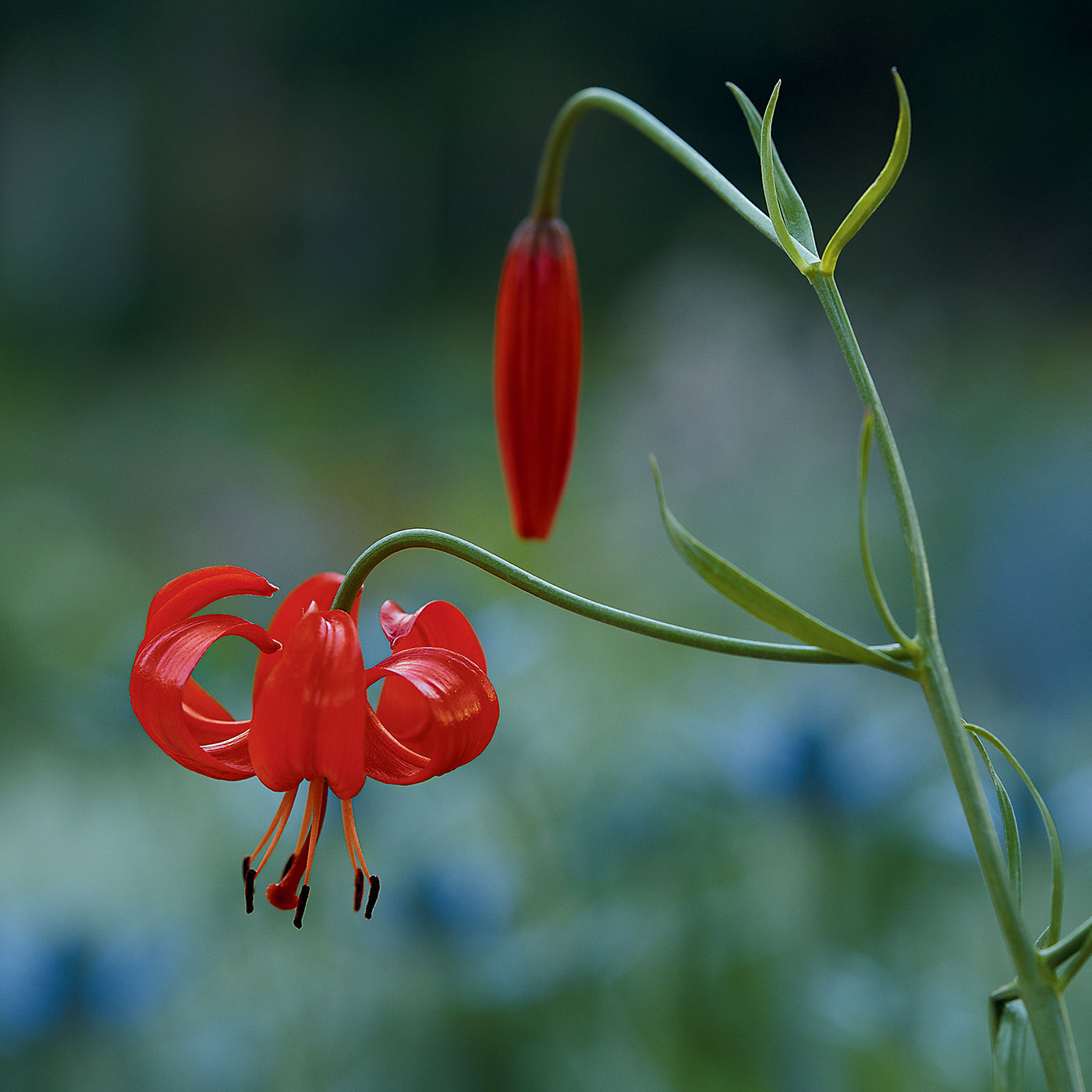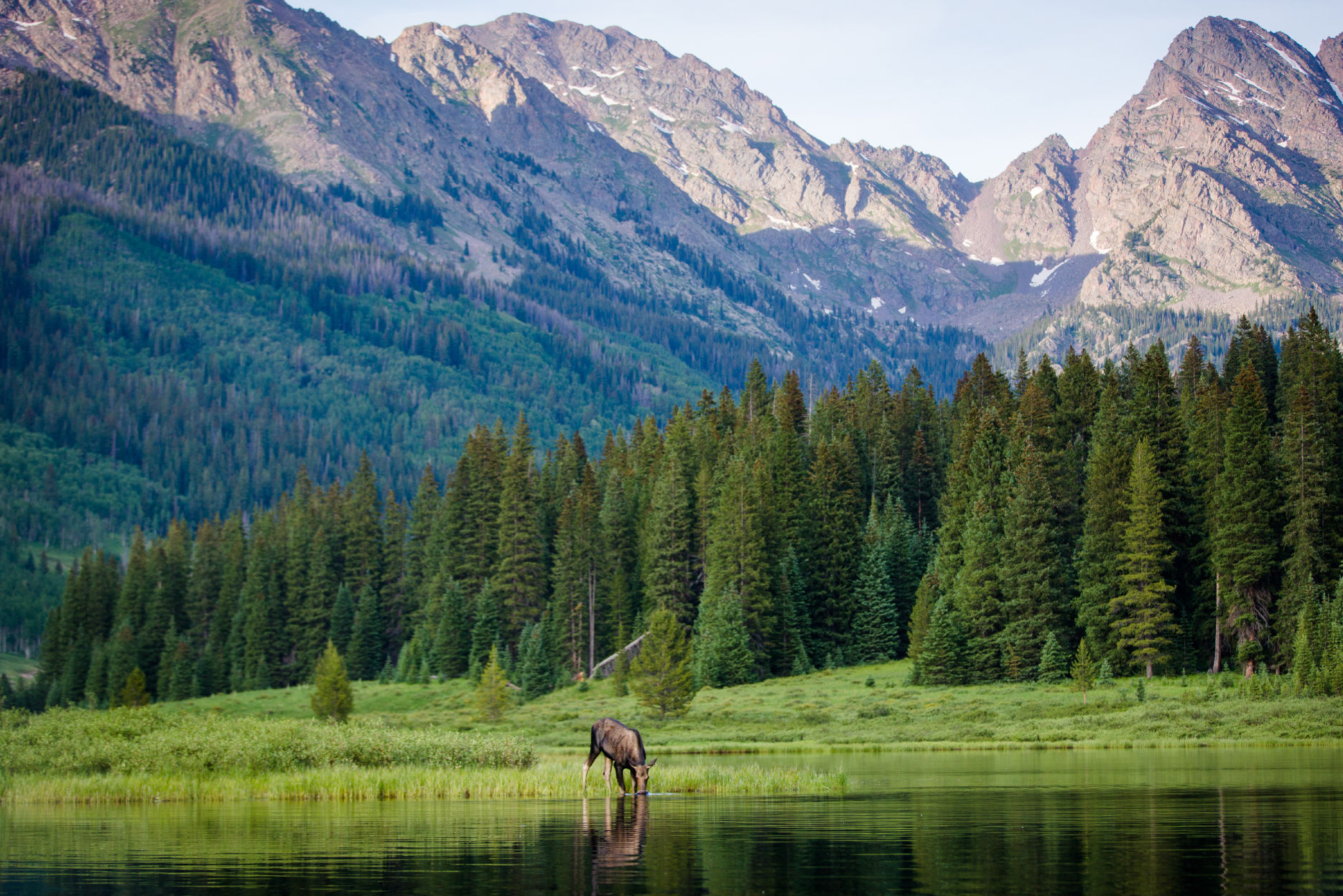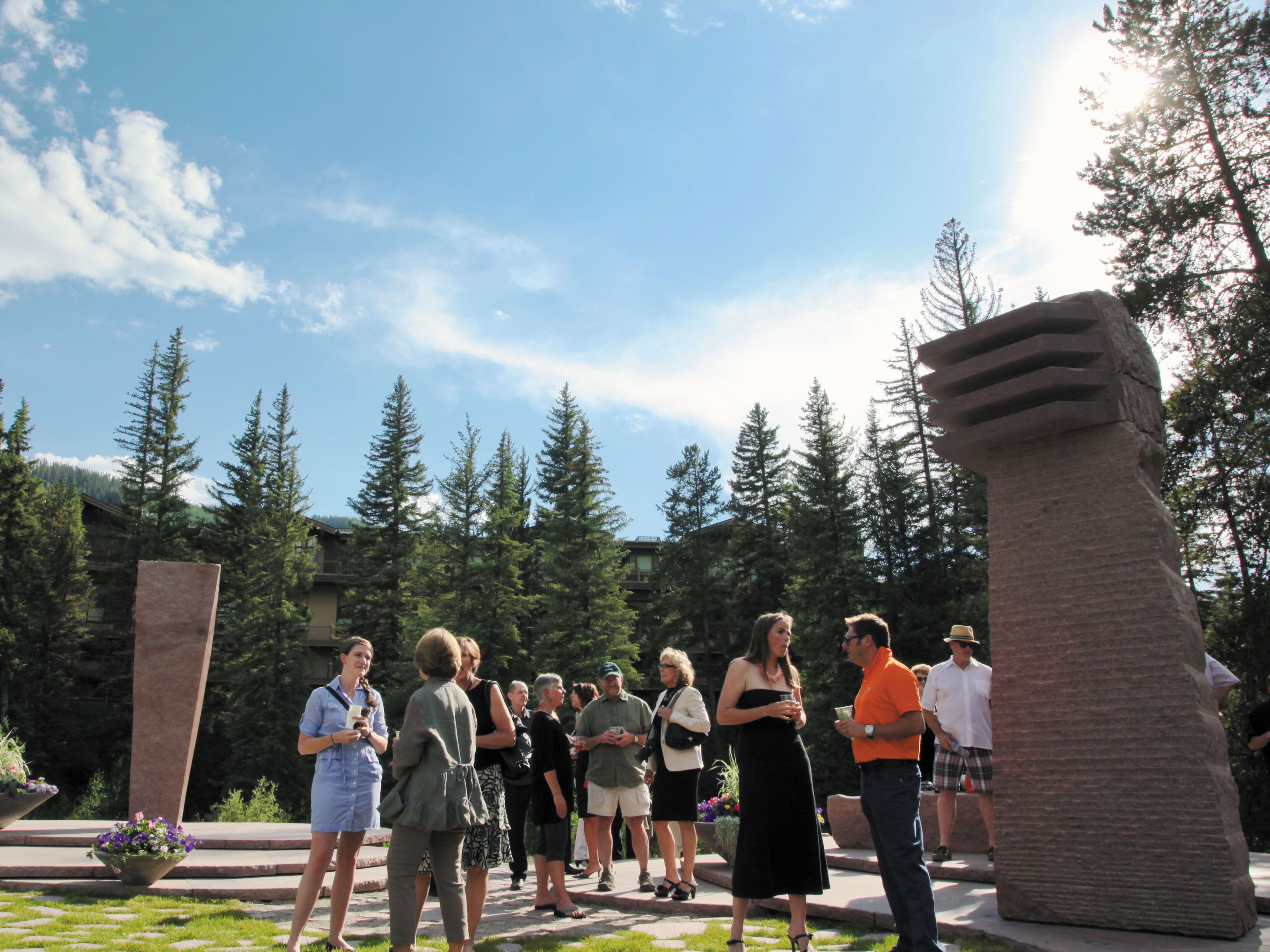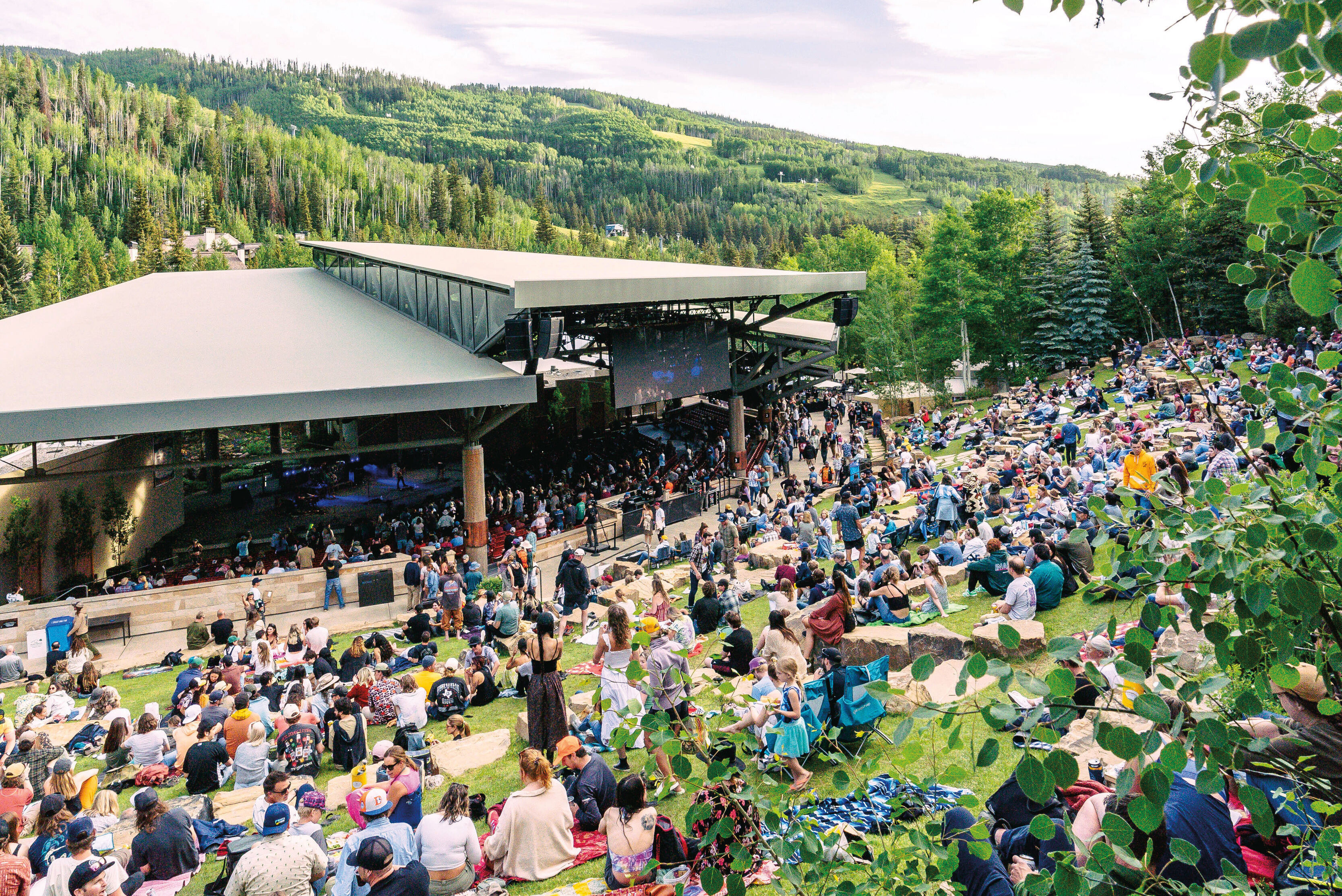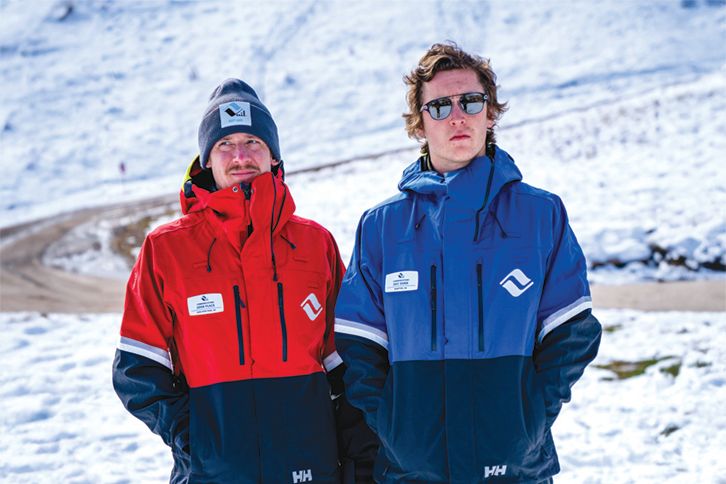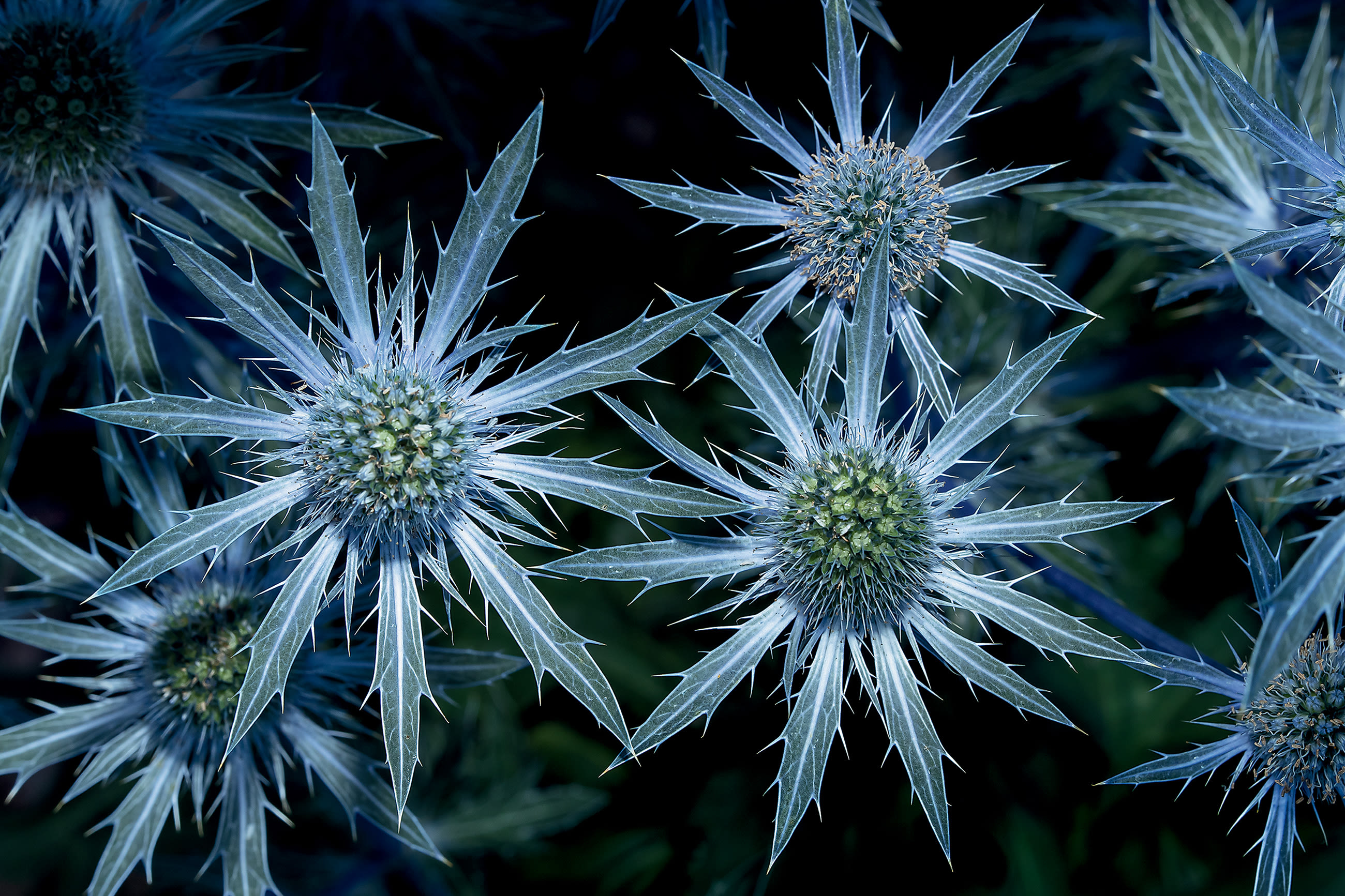
Land Above the Trees
Just like babies, great ideas are born everywhere, even in the back seat of a car.
In the late summer of 1983, Marty Jones, a landscape designer and owner of a small nursery devoted to alpine plants, was driving home from Denver with a new pickup truck when it broke down near Georgetown, and he pulled to the shoulder of the highway. “The truck just quit, so I stuck out my thumb,” recalls Jones. Almost immediately he was picked up by Helen and Bob Fritch, transplants from suburban Chicago who had relocated to Vail Village with their three daughters in 1974 as the new owners of the Sitzmark Lodge.
“Helen was a customer of mine at the time, so she knew who I was,” adds the now-retired Jones, whose Wildflower Farm garden store in Edwards remains a must-visit roadside attraction for backyard botanists from all across the valley. “As we drove along, I told her my dream of having an Alpine botanic garden and building it in Vail. Her ears really perked up.”
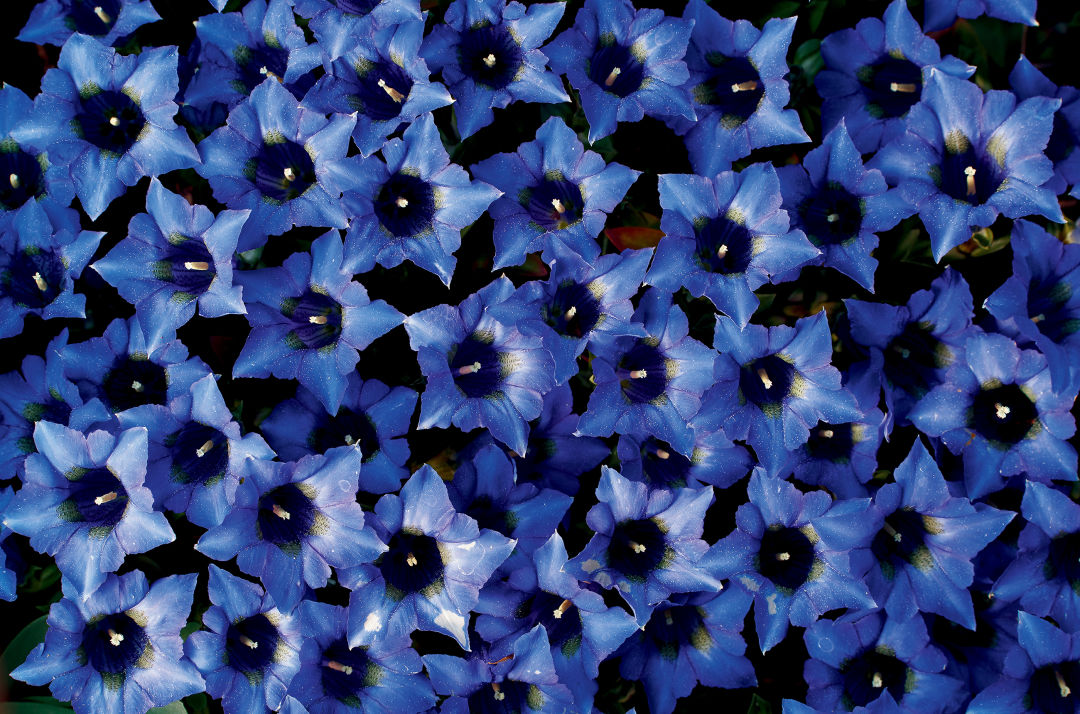
Soon after, Fritch called Jones to tell him she was retiring as president of the school board and that building a botanic garden showcasing plants that could grow in Vail would be her next project. True to her word, Fritch set up a meeting of pioneering community members at the home of Cissy and John Dobson, entrepreneurs from Vermont who had moved to Vail in 1965 and had funded construction of the village’s iconic covered bridge as a landmark for their creekside Covered Bridge Store.
At the meeting, Jones gave a brief slideshow and explained his concept. Fritch pitched the need to raise money to a group of local luminaries that included Fitzhugh Scott, an architect who had led the design of the ski village’s layout and many of its iconic buildings, and his wife, Eileen; Don Simonton, pastor of the town’s Lutheran church and Colorado Ski Museum founder, and his wife, June, a historian and author; Marge Burdick, a socialite and jazz aficionado who owned the Red Lion with her husband, Larry; Tom Steinberg, Vail’s first physician, and his wife, Flo, who cofounded the Eagle County Historical Society; and Donna and Fred Meyer, a retired attorney who, with John Dobson (also Vail’s second mayor), spearheaded a campaign to build the village’s signature outdoor performance venue. Despite the group’s collective influence and tremendous enthusiasm for the project, says Jones, the botanic garden initially foundered for want of buy-in from the Town of Vail.
In 1985, town leaders initiated a master plan for a park and outdoor amphitheater to be located on 39 acres just east of the village on the north side of Gore Creek, an area then known as Antholz Ranch. When June Simonton heard this, she immediately proposed that the garden be located in the park and adjacent to the amphitheater. Included in the plan for the nascent park was a small oval of land outside the amphitheater entrance where Jones says town officials “told us to ‘give us an example of what you’re thinking, and we will decide if we can support you.’” A collective of gardeners from across the valley and around the state incorporated as the Vail Alpine Garden Foundation and put the project in motion, starting with a fundraising campaign led by Helen Fritch and hotelier Sheika Gramshammer with their good friend Betty Ford.
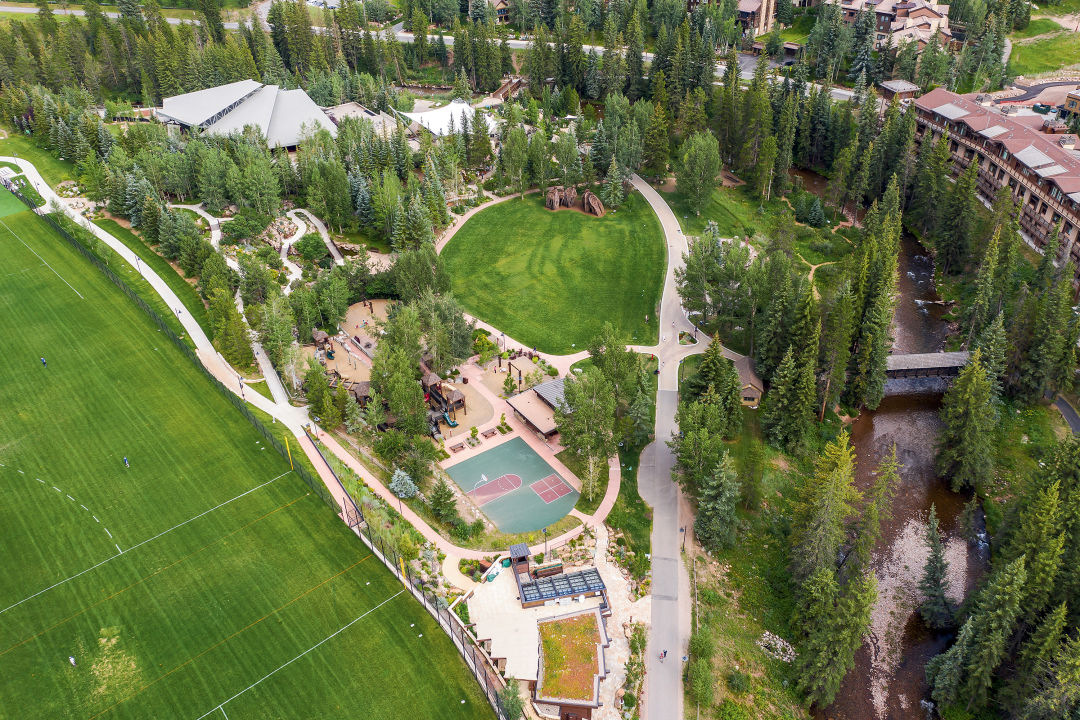
In the late 1980s, the Betty Ford Alpine Gardens began as a demonstration garden on a small oval of land outside the main entrance to the Gerald R. Ford Amphitheater. Over the decades, it has grown to occupy a lushly landscaped five-acre sliver of Ford Park just west of the outdoor concert hall.
In the summer of 1987, Jones, with an army of volunteers (by then, the Alpine Garden Foundation boasted more than 100 members), went to work. Instead of the straightforward “landscaping” that the town had envisioned, however, Jones—a self-taught landscape designer who never met a piece of earthmoving equipment he didn’t like—created a series of elaborate displays, complete with outcroppings made from boulders collected throughout the state and topographic changes to show residents and visitors just how diverse gardens in the Rocky Mountains could be.
“Someone loaned us a crane to move a few quartzite boulders from Camp Hale,” he recalls. “And then we planted the garden with all sorts of wonderful exotic alpine plants.”
Completed in August, a month after construction of the Gerald R. Ford Amphitheater was finished, the Alpine Demonstration Garden—aided by Vail’s cool temperatures, monsoon-like rains, and crisp, clear air—flourished.
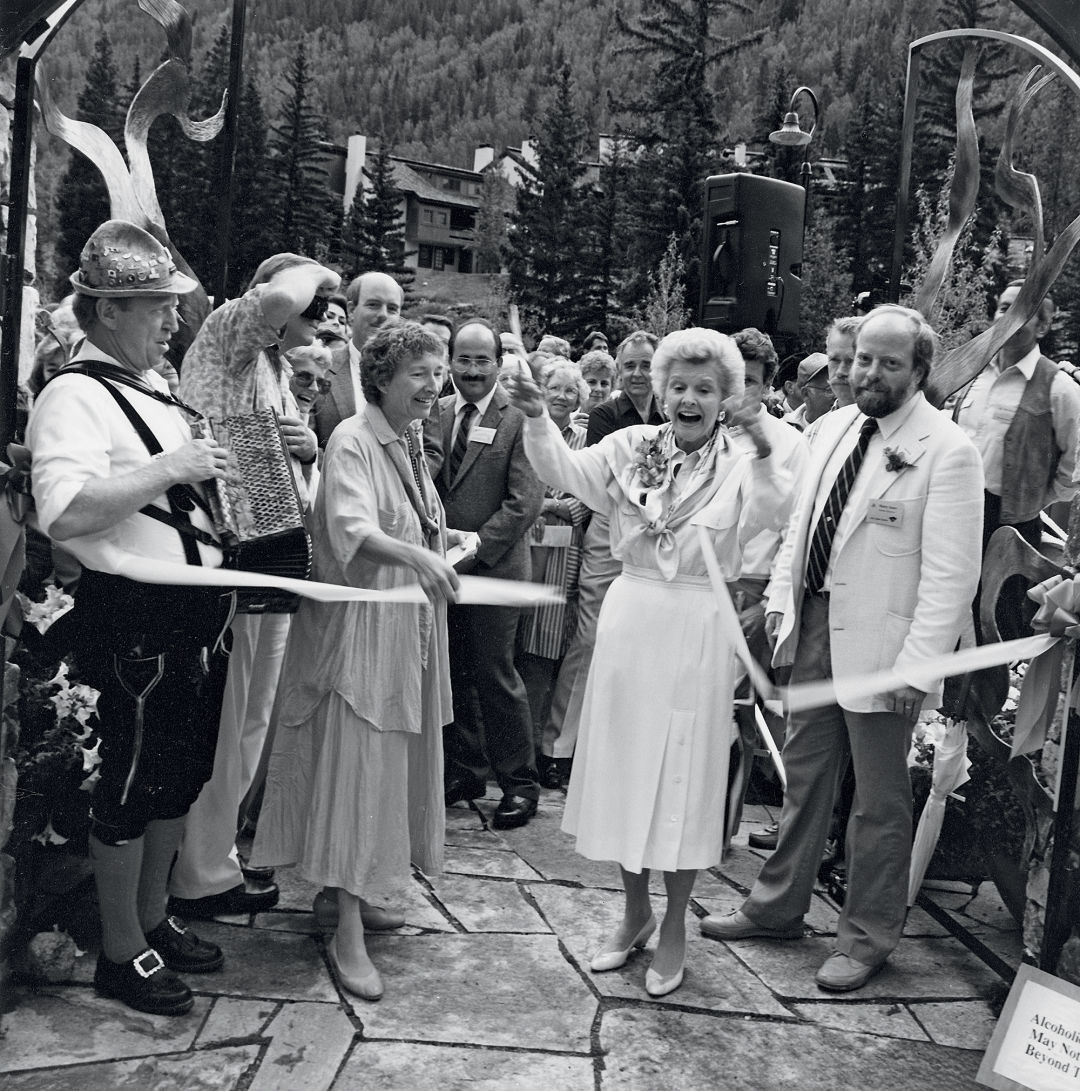
Flanked by Helen Fritch (left) and Marty Jones (right), Betty Ford cuts the ribbon to celebrate the opening of the Gardens named in her honor; the August 11, 1989, dedication attracted a crowd of luminaries, including Denver Botanic Gardens Senior Curator Panayoti Kelaidis (in the background behind Fritch).
Image: Courtesy BFAG Archives
In July 1988, the project was officially renamed Betty Ford Alpine Gardens in honor of the former First Lady and her many contributions to the Vail Valley, and five acres was set aside for future expansion, which would occur in several phases over the next two decades. A month after Phase II—an alpine perennial garden—was completed, a formal dedication was held on August 11, 1989, with Marty Jones, Helen Fritch and fellow board members, guests from Denver Botanic Gardens, the Vail Valley Foundation, and the Town of Vail joining the Fords and the many donors and volunteers who made the garden a reality. The town’s spiritual leader, Reverend Don Simonton, delivered a moving invocation, describing in detail the many individuals memorialized in benches, water features, and floral collections throughout the gardens.
Aided by a high-profile rebranding and an enthusiastic public outreach campaign, the Gardens quickly became a must-see destination in Vail, frequented by tourists and locals alike for not just its stunning floral displays, but the refuge it provided from the bustle of the increasingly crowded village. Inspired by a Gardens-sponsored annual floral competition recognizing outstanding gardens and floral displays throughout town, flowers became Vail’s summertime signature, with quaint European-style pedestrian streets awash in color: storefronts, railings, and walls adorned with window boxes and flowerpots; traffic medians and roundabouts transformed into colorful ribbons of blooming bouquets.
Fritch and Jones conducted summer wildflower tours and seed exchanges, encouraging locals and visitors to learn more about the ecology of Vail and the surrounding mountain environment. They offered horticultural advice as well, promoting native perennials and shrubs that would flourish at 8,000 feet and above. Their goal was clear, recalls Jones: “We wanted to make sure people knew that more than the ‘three Ps’—petunias, pansies, and poppies—could grow in the mountains.”
What is an alpine plant?
Alpine life zones are found in mountain regions from pole to pole. In Colorado, they exist above treeline (approximately 11,000 feet). Vivid, prismatic jewels of color displayed on delicate, minuscule plants that hug the ground or grow in sheltered cracks and crevices, alpine species are programmed to succeed against all odds regardless of elevation, latitude, geography, or hemisphere.
Denver Botanic Gardens’ Senior Curator and Director of Outreach Panayoti Kelaidis credits Betty Ford Alpine Gardens and Marty Jones for “teaching people in mountain communities how to garden spectacularly.” A strong proponent of the idea that memorable floral displays help mountain towns diversify their economies, Kelaidis says that Vail’s emergence as a destination alpine village helped promote the concept that “a gorgeous, flower-filled town in Colorado can be a major economic engine for both the community and the state.”
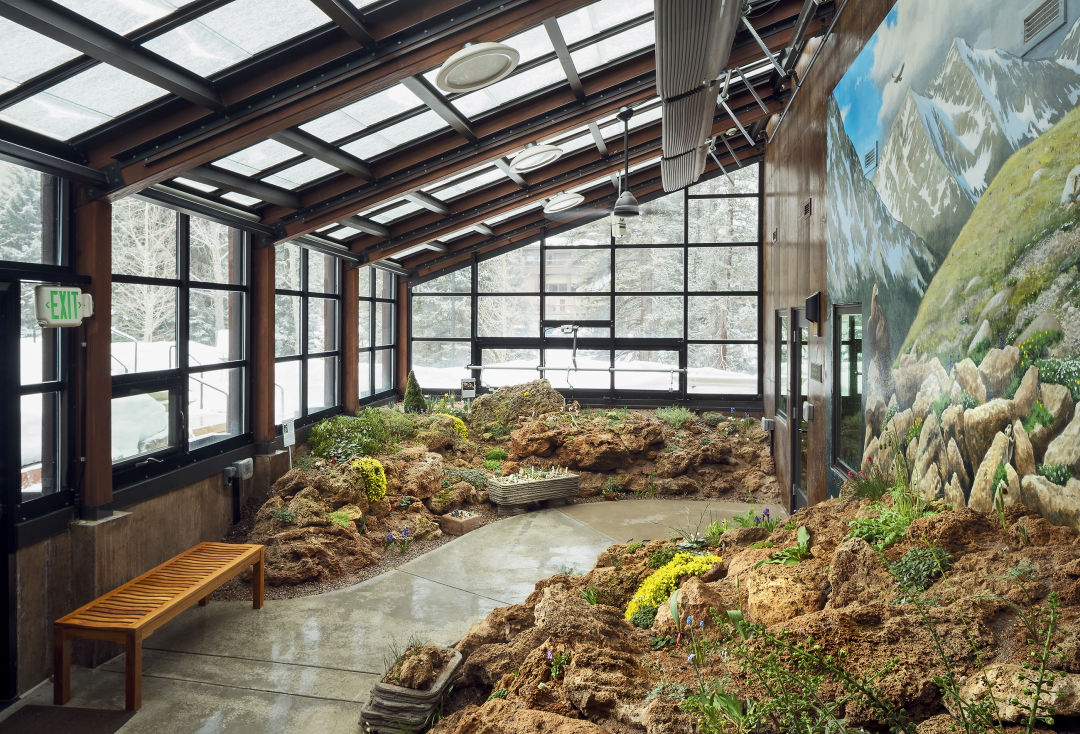
Exotic species from around the world bloom profusely in the tufa rock crevices of the Alpine House in February and March, while outside the Gardens slumber beneath winter snow.
Numerous expansions to the grounds followed. In June 1991, the Gardens added an alpine meditation garden, with a meandering stream lined with hundreds of candelabra primroses that provide a photo-worthy blaze of color each June. The alpine rock garden was dedicated on July 4, 2000, in a ceremony attended by the Fords, and in 2002 the Children’s Garden and Schoolhouse Garden were completed. After years of planning, in 2015 the Education Center was completed, a nexus of the Gardens that includes office space, a large gallery space for interactive and revolving displays, and most spectacularly an Alpine House, a climate-controlled greenhouse used to grow alpine plants, one of very few in the United States.
Currently, a corps of 50 volunteers support a staff of nine who, working within a $1.4 million operating budget, spend more than 3,500 hours annually maintaining the Gardens, giving educational tours, operating two gift shops (one on site, another located in the Sitzmark Lodge—a testament to Fritch, who died in 2019 after nearly three decades of service to the Gardens), and working at educational events, such as Après in the Gardens, an evening speaker series featuring eminent experts in alpine ecology and botany that runs throughout the summer. As a nonprofit that does not collect an entrance fee, the Gardens relies heavily on donations from visitors, corporate benefactors, and members. In addition, because the Gardens are located on Town of Vail property, the town antes in $70,000 annually.
Events
Guided Garden Tours: Mon, Thu & Sat, 10:30–11:30 a.m. (through Aug 7, BFAG Education Center), free
Chefs in the Garden cooking demos: Thursdays, noon–1 p.m. (July 8–Aug 5, Gerald R. Ford Amphitheater), $15
Volunteer gardening work sessions: Mon & Thu, 9 a.m.–12 p.m. (through Sept 23, BFAG Tool Shed)
On the Roof of the Rocky Mountains book launch community party: June 26, 2–4 p.m. (BFAG Education Center)
However, Betty Ford Alpine Gardens contributes far more value to the local community—and to the worldwide conservation network it serves—than the public revenue it receives. Fritch, Jones, and other founding directors had the foresight to establish both a database that included photographs and the provenance of all the plants in the Gardens at the time (currently, more than 3,000 species that thrive in mountain environments) and a seed collection strategy intended to facilitate the exchange of uncommon and unique alpine species with rock-garden societies around the world. The Gardens staff also became involved in projects to protect habitat in its backyard. Just east of Vail near the summit of Vail Pass, early leaders recognized that destruction of fragile alpine tundra would permanently damage wetlands along Shrine Pass, a highly popular recreation destination. In 1994, board member Adele Douglas led community volunteers and staff in the construction of a boardwalk through the wetlands to discourage hikers, bikers, mushroom foragers, and other recreationists from trampling the fragile flora.
British-born Nicola Ripley came to Vail in 1990 at the behest of Jones, who needed an alpine plant expert to manage a mail-order business from his specialty garden center, Colorado Alpines. A graduate of Bangor University in Wales, she had extensive experience researching arctic and alpine flora in the United Kingdom. Soon, she knew everything about most of the Rocky Mountain alpine species, too. Later, as an employee of the Gardens, Ripley immersed herself in the organization’s operations, developing and maintaining plant records, collecting seeds, propagating new species, and sharing both the unique species and her vast knowledge of alpine plants with professional organizations around the world. Since her appointment as executive director in 2011, the Gardens has evolved into an internationally acclaimed public botanic garden for alpine horticulture, education, and conservation.
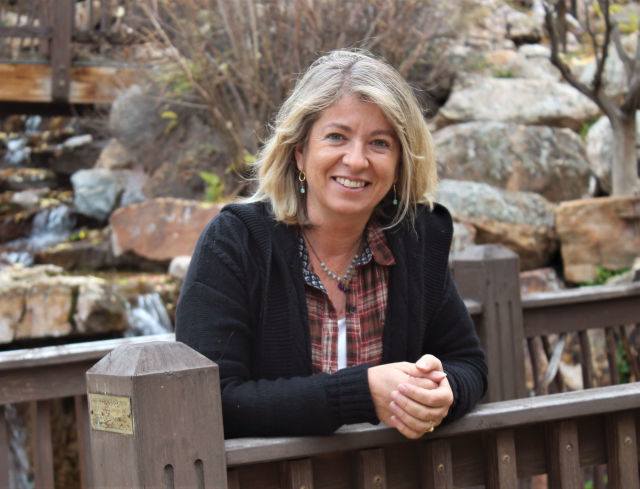
Betty Ford Alpine Gardens Executive Director Nicola Ripley
Circumspect about the Gardens’ role in the botanical world, Ripley says its work reaches far beyond its gates. The challenge, she explains, comes with balancing a beautiful floral display with scientific discovery and a desire to connect with visitors. “The reality is that most people come here because it’s beautiful, not because we are saving the world’s alpine flora,” she says. “But I have to hope that the knowledge percolates through the Gardens and our expanding collections.”
At Betty Ford Alpine Gardens, education programs focus on the global reach of the alpine habitat through interpretive exhibits, scientific collaborations, and most importantly “by what is growing in the gardens,” says Education Director Nanette Kuich. She believes that educating visitors on a local level is a critical step in helping children and adults understand the ecological and environmental devastation that is occurring on a broader scale. “The Gardens’ focus is centered on a very small ecosystem, but that ecosystem is probably the one that is being most impacted by the changing climate and the influence of the human population,” she explains. “When people see the effects of climate change on this small ecosystem, we hope it inspires them to make changes in their part of the world.”
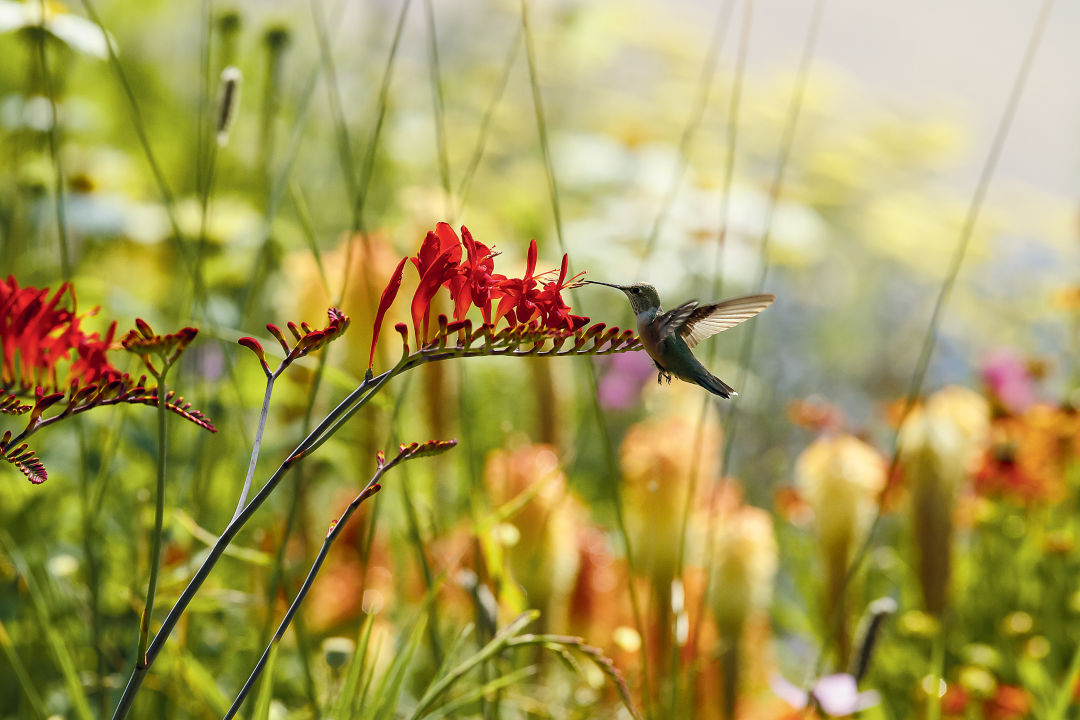
A hummingbird visits the brilliant, flame-red flowers of Crocosmia ‘Lucifer’ in the Pollinator Garden.
As the message and mission of botanic gardens becomes more focused on science and botany, these organizations are able to cast a wider net of influence across the globe. “We’re here to tell a story, and because we have no political affiliations, our story tends to be the one that people most believe,” says Ripley. Universally accessible to all who pass through their gates, botanic gardens provide an emotionally rich experience, derived from interacting with plants that are constantly changing and adapting to their own environmental and ecological setting. Simply recognizing that gardens are living things—with soil, microbes, plants, and animals—elicits feelings of elation in people because they are drawn to care, as Beth Meyer, professor of landscape architecture at the University of Virginia, suggests in an essay published recently in the Journal of Landscape Architecture.
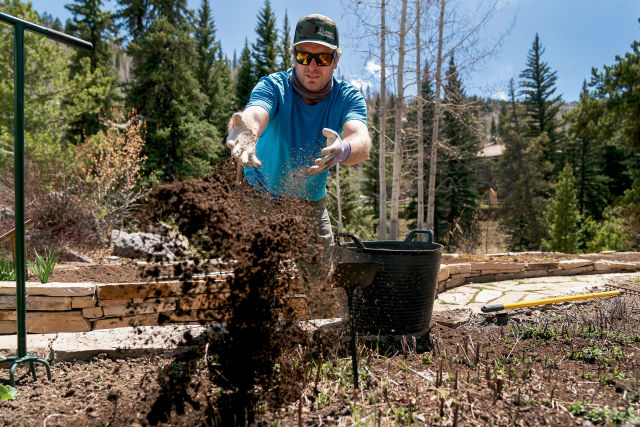
Curator of Plant Collections Nick Courtens spreads a light layer of compost to nourish alpine plants emerging from soil that has been covered for months in winter snow.
It is that very act of caring, of finding wonder in the face of beauty, that keeps visitors—at least 120,000 annually (an estimate, since there is no admission charge)—returning, year after year, to Betty Ford Alpine Gardens. A visit to the Gardens most often starts as a purely visual experience, from which an identity-related response emerges, one that has a lot to do with free-choice learning, says Kuich. “As educators, we look for learning experiences that incorporate choice and control because they are among the most powerful and memorable,” she adds. “When a family or an individual can hunt and gather for information that is most interesting to them, they are actively retaining ideas and reinforcing their beliefs.”
Earth First
Biodiversity, pollination, good soil, and plant placement are key to the beauty of any garden, explains BFAG Curator of Plant Collections Nick Courtens. When gardening at high altitude, good soil matters most: A hefty allowance of compost, made from leftover plant debris and other natural additives, creates a rich mixture packed with nutrition and microbial activity that stimulates root growth and plant health.
That’s where the on-site educational programs connect with the Gardens’ seed collecting and preservation mission. At Betty Ford Alpine Gardens, annual seed collecting trips take staff members into Colorado’s high alpine to gather seed for seed banking with the USDA National Seed Laboratory and cultivate for germination trials. In addition, staff monitor Important Plant Areas where rare and endangered alpine species coexist in an ecologically rich environment to understand changes in population dynamics and growth. Species that thrive in alpine environments where climate conditions dictate a level of hardiness seen nowhere else on the planet are extremely important harbingers of the threats posed by global climate change and are important tools for engaging the public on issues related to geography, culture, and conservation.
In other words, while shrinking rain forests and rising seas tend to dominate ecological news, alpine environments are being equally—some would argue more—compromised by the changing climate and the influence of the human population. David Inouye, professor emeritus at the University of Maryland, College Park’s Department of Biology, has spent over four decades studying the relationship among plants, hummingbirds, and other pollinators in the mountain meadows around Crested Butte in an effort to understand just how quickly alpine ecosystems in Colorado are changing. His conclusion? Since the 1970s, the Rocky Mountain wildflower season has lengthened by an average of 35 days, a fact with implications far beyond the borders of the Centennial State.
Realizing that plants and plant biodiversity are the very foundation of human survival, it is imperative, then, that institutions like Betty Ford Alpine Gardens continue to advocate for the land above the trees—a place where tiny brilliant flowers flourish in a climate of extremes; where trees are stunted and twisted by desiccating winds, frigid temperatures, and short growing seasons; and where snow, the lifeblood of farms, ranches, communities, ski resorts, and cities downstream, holds ultimate control over the survival of the ecosystem.
Beyond the basic but very important provision of food, clothing, medicine, and shelter, plants are primary contributors to clean air, water, and soil. Plants are also the essential keepers of beauty, tranquility, and peace, their offerings a respite from an increasingly chaotic world that is fast approaching eight billion people. As world-renowned botanist and environmentalist Peter Raven notes, “What we are witnessing now is a permanent change in our planet’s resilience and resources. Educating for the future means knowing where plants come from and how they relate to one another. How Betty Ford Alpine Gardens and other institutions across the world protect these living treasures is key to the future of global biodiversity.”
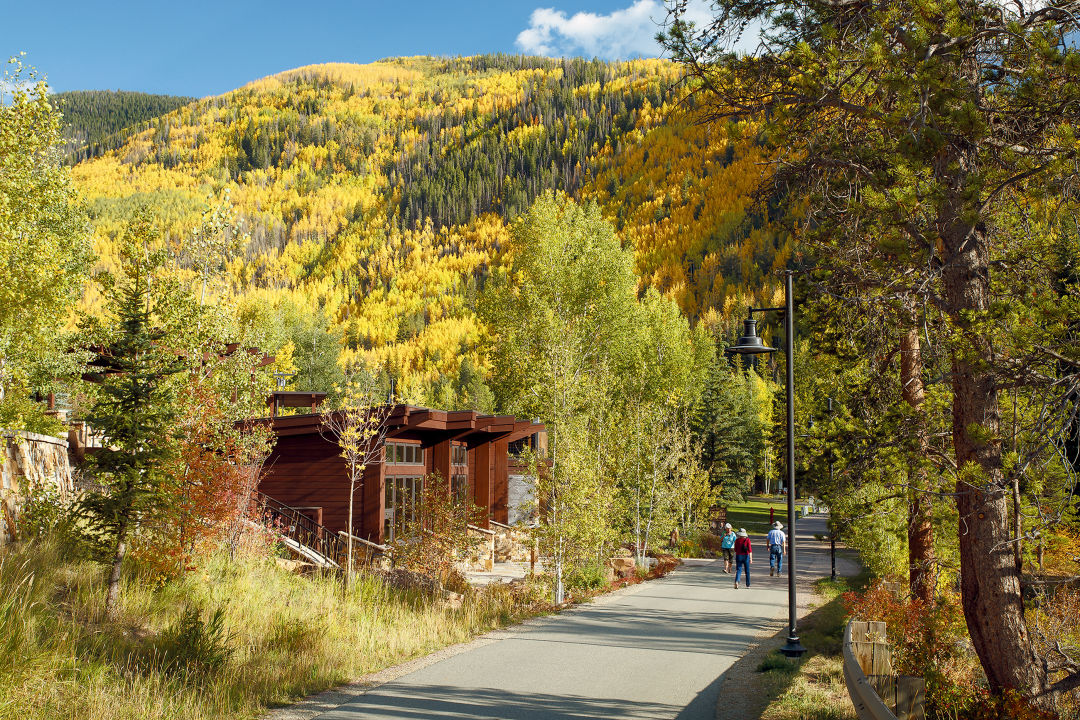
In September, autumn’s full glory is on display in Ford Park. From the Education Center, views to Golden Peak and Vail Mountain offer visitors an inspirational respite from the bustle of the village.
That is the legacy of Marty Jones and Helen Fritch and so many others who nurtured an idea that, like a seed, was blown from the side of a highway and into the back seat of a car where it found a home, took root, and flourished.
“Our garden started in your living room, you know,” Fritch wrote to Cissy Dobson in 1994. “You and John invited friends to your home to see the beautiful pictures that Marty Jones had taken of alpine wildflowers. Fitzhugh and Eileen Scott were there. So were Don and June Simonton, Marge Burdick, Tom and Flo Steinberg, Donna and Fred Meyer, and I can’t remember who else. That was 1983, I think.... It seems like a long time ago, so much has happened to the Alpine Garden since that afternoon.”
In so many ways, it has matured, and it has grown.
The Details
When to visit: Daily from dawn until dusk
What it costs: Free, but $5 donation suggested
Where to find it: In Ford Park, just west of the Gerald R. Ford Amphitheater, below the upper athletic fields, and across the creek from Manor Vail Lodge
Where to park: Ford Park lot, Vail Village Parking Structure
More information: bettyfordalpinegardens.org
Photography from the forthcoming book On the Roof of the Rocky Mountains, published by Betty Ford Alpine Gardens.
